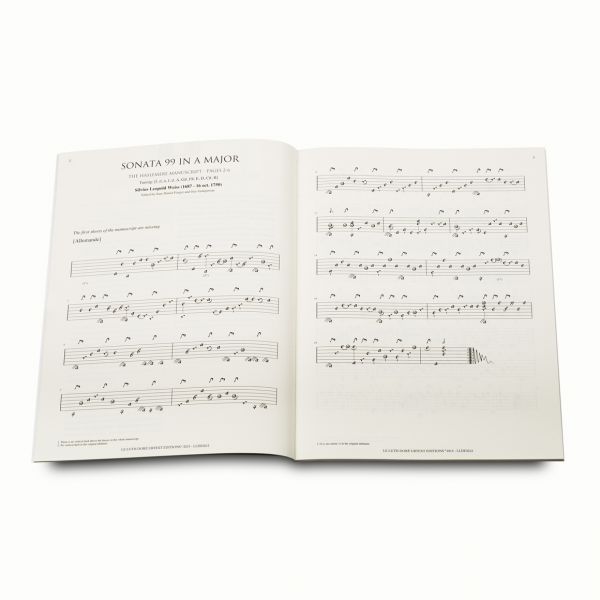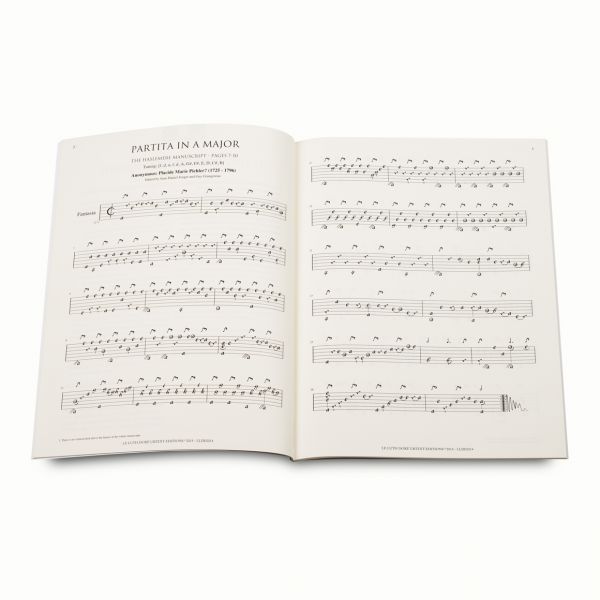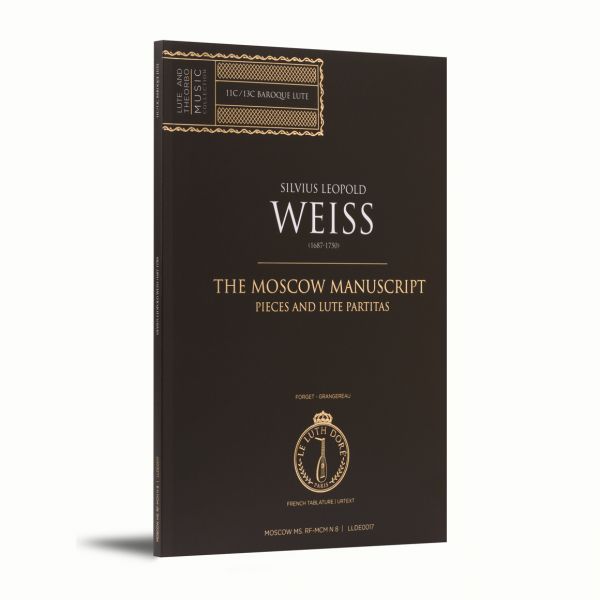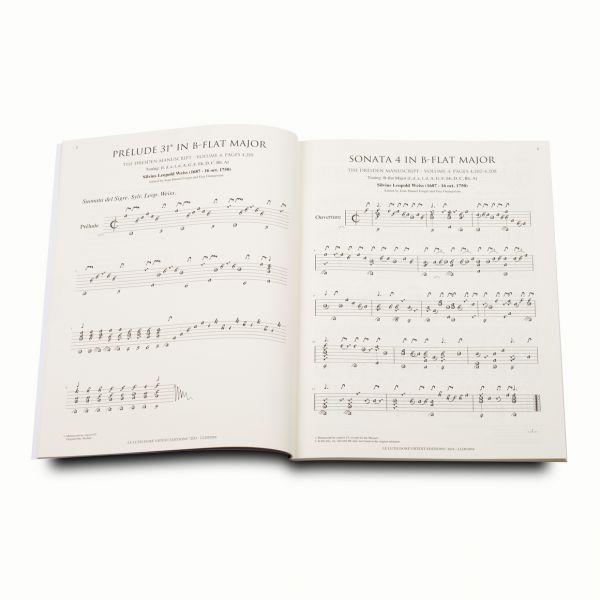The Haslemere Manuscript
This manuscript contains tablatures that a lutenist from Dresden or Prague assembled in the second half of the 18th century, most likely to be used for his own playing or teaching. His instrument of reference was a 12-course D-minor-tuned lute. Some pieces require a 13th course, but they are few in number, and the indication of a 13th course may have been added later. This copyist often indicated a composer's name alongside the titles; however, many pieces, whose origin must have been known to him, are anonymous. The tablatures are generally grouped by key, in order to be played consecutively without having to retune the bass courses. Only rarely are these groups of pieces explicitly referred to as Suites or Sonatas.
The original manuscript is now kept at the Carl Dolmetsch Library, in Haslemere, England; its reference is GB-HAdolmetsch ms II.B.2. Its history is unclear; it may have belonged to the Fétis collection, since we know that Fétis sold or traded several of the many works he had purchased1.
In the early 20th century, the manuscript was acquired by Eugène Arnold Dolmetsch (1858-1940). Born French into a family of organ, piano and harmonium makers, Arnold Dolmetsch went to London to study early music and its instruments. He earned a baccalaureate in music in 1889, and settled in London.
After teaching a short while, he began building keyboard instruments, and opened a lutherie workshop in Haslemere in Surrey, where he built copies of almost every sort of instrument played from the 15th to the 18th century.
Johann Georg Weichenberger (1676-1740)
Johann Georg Weichenberger was baptized in Graz, Styria, on 11 December 1676. Ernst Gottlieb Baron, however, in his treatise "Historisch-theoretische und praktische Untersuchung des Instruments der Lauten… ", states that he was born in 1677 in Vienna.
Johann Georg Weichenberger was not a professional musician, but a civil servant assigned to an accounting department at the Ministry of Finances of the Court of Vienna. One document declares that he was an officer of the Exchequer (i.e., the court finances), whereas others claim that he was a cavalry officer, a military title. Be that as it may, he had, throughout his life, many other centers of interest than his ministerial functions, and his artistic sensibility was highly developed.
A great connaisseur of painting, he left a considerable collection at his death, and was a very proficient lutenist all his life. It is highly probable that he met Silvius Leopold Weiss when the latter spent eight months in Vienna in 1718 and immersed himself in the musical life of the court and the city.
Johann Georg Weichenberger was a "Registrator und Expeditor" (registrar and dispatcher) at the Accountancy Divison of the Imperial chambre when he died in Vienna, on 2 January 1740, at the age of 63.
Jean-Daniel Forget | Le Luth Doré ©2015




















































